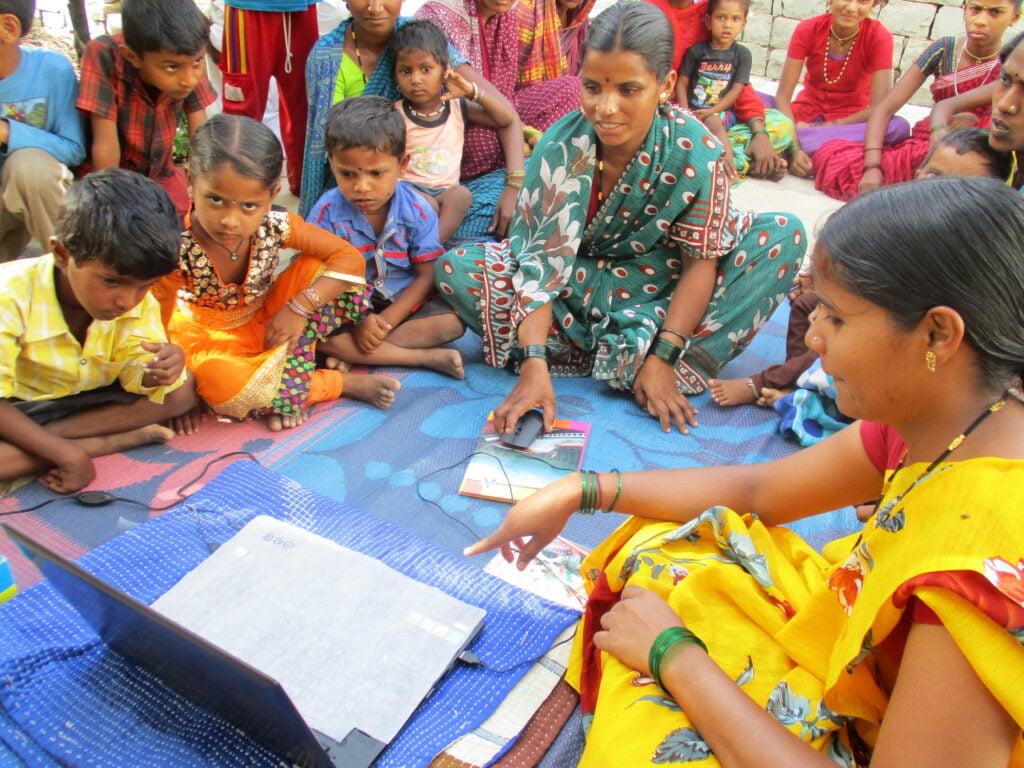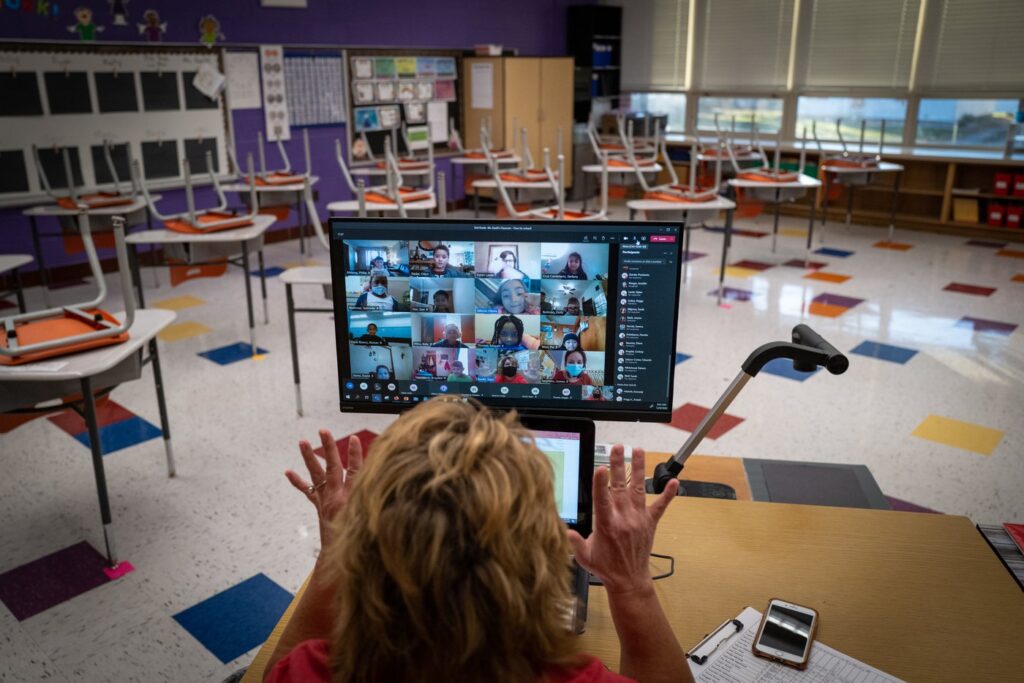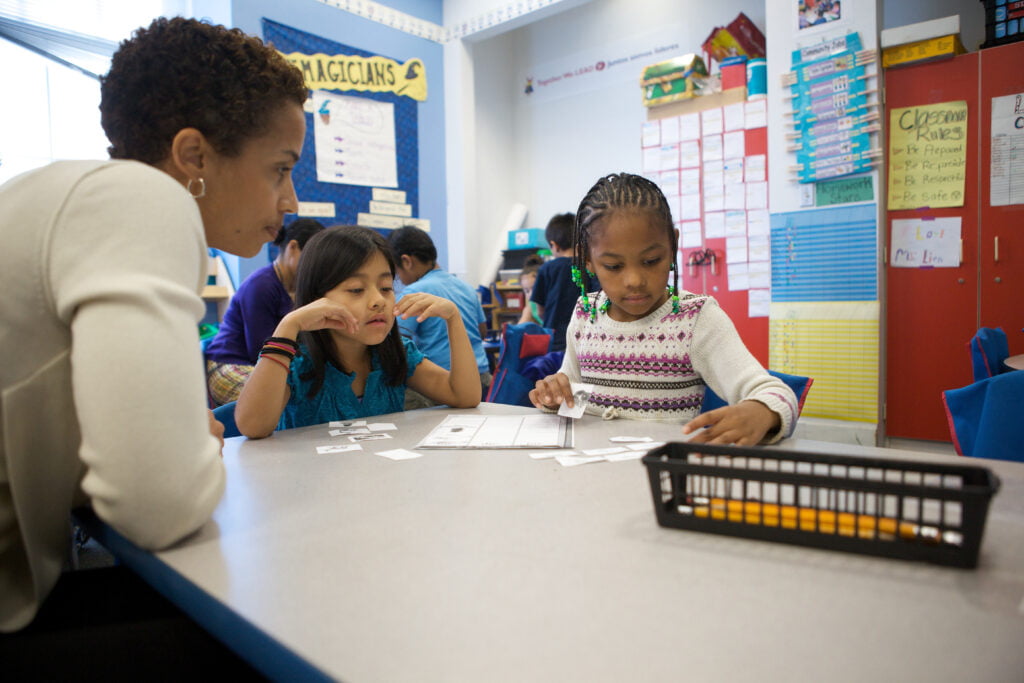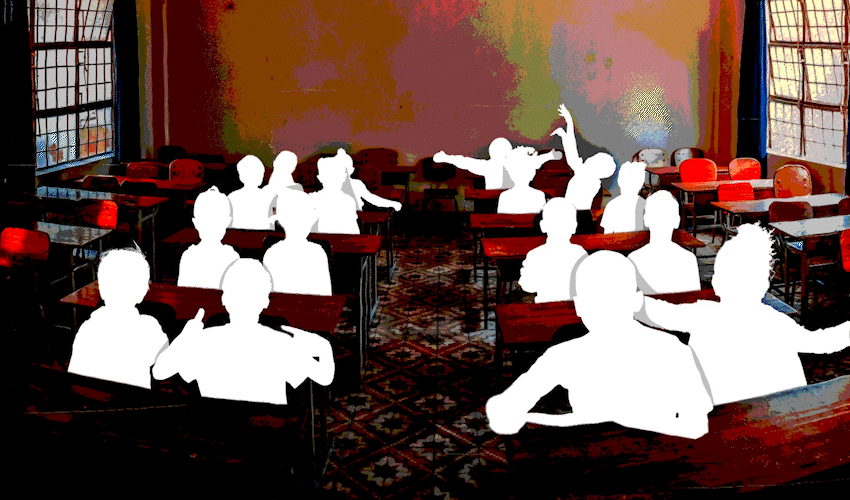The poor miss out when teaching goes online, leaving millions without proper education.
 Online education will struggle to replace traditional schooling. : Girish.h/Wikimedia Commons Creative Commons Attribution-Share Alike 4.0 International https://creativecommons.org/licenses/by-sa/4.0/deed.en
Online education will struggle to replace traditional schooling. : Girish.h/Wikimedia Commons Creative Commons Attribution-Share Alike 4.0 International https://creativecommons.org/licenses/by-sa/4.0/deed.en
The poor miss out when teaching goes online, leaving millions without proper education.
Millions of children in India may never return to school following the severe disruptions of rolling COVID-19 lockdowns in 2020 and 2021.
Online teaching — meant to replace in-classroom instruction — mostly failed for a variety of reasons. Poor internet coverage and the prohibitive cost of decent bandwidth for many families was a major factor. Despite increasing takeup of mobile phone plans, the kind of coverage taken for granted in developed nations is still lacking, or too expensive, in India.
As a result, the dropout rate of secondary students surged to as much as 17 percent. Girls were the worst affected. Up to 10 million girls were at risk of dropping out. Several surveys showed child labour rates had shot up, as had instances of child marriage. “We might be risking a lost generation of children who may never return to school. The impact on girls is disproportionately worse,” said UNICEF India representative, Yasumasa Kimura.
In 2020-21, there was an assumption schooling could be conducted online during lockdowns but for a majority of schoolchildren in India there was almost no access to schools for months.
Economists Reetika Khera and Jean Dreze documented how children in their formative years lost out on learning and social skills while children dependent on the mid-day meals served in the schools lost out on essential nutrition.
In one paper researchers documented the impediments in accessing online education for a large majority of school children in India during the COVID-19 lockdowns. It pointed out the importance of human layers in building resilience during emergencies and provides policy suggestions for future emergencies.
The primary assumption behind relying on online schooling is that there is universal and equitable access to the internet for school-going students. With the introduction of cheap Android smartphones and the price-wars among major telecom operators, the number of internet users in India has been increasing at a rapid rate. But on closer inspection the quality of access such as better bandwidth is more important for online schooling.
Most basic prepaid telephone packs with 4G internet access provide 1 to 1.5GB usage allowance per day. This is not enough to sustain the high bandwidth requirements for online schooling, which for six hours of daily schooling, would conservatively consume around 3GB of data daily per child.
Many households have multiple school age children, so the costs would multiply. A more fundamental barrier is unavailability of Internet-enabled devices (like smartphones) in households, or households having just one device to share.
Research showed parents tended to prioritise older children over younger children in access to resources for learning when they were limited by the number of available devices and bandwidth caps. Teachers reported having to cut down on school hours to enable parents to conserve bandwidth.
Mobile signals are also often poor, especially in rural areas, and are unsuitable for streaming applications such as online schooling. Children sought out hilltops and high altitude areas to get a strong signal for classes, leaving the safety of their homes during the lockdowns. Which questions the rationale of keeping schools closed in the first place.
The availability of network, bandwidth or signal was not the only factor behind low traction for online schooling. Several socio-cultural factors played out at the same time. Many children had lost parents to COVID-19 while others had to take up jobs to support their families as the parents had lost their livelihoods. These children were forced out of schools and may never return to a formal education. Other researchers have documented female students who dropped out during the pandemic might never return to school.
There have been online education success stories such as supplemental ed-tech platforms like Byju’s. But these platforms cost money and not all households could afford the fees, meaning they were almost exclusively used by wealthier families.
Children from less well-off families without access to these platforms found it more difficult to cope with online schooling. This also highlights the importance of institutional education for children from poorer communities.
Teachers reported children did not perceive the homes as an environment for learning. Some students were actually unaware of the pandemic and assumed schools were on a long vacation. Online schooling also deprived children of learning and interacting with their peers. Teachers reported parents would prefer children do household chores instead of lessons.
But there have been innovations and improvisations to get kids learning. Several teacher groups broadcast lessons on village loudspeakers, although students would soon lose focus and concentration in the absence of the enabling environment of a school.
Another group used a community radio station to broadcast lessons on a timetable and also had repeat broadcasts to help students who may have missed lessons. Teachers and students were invited to the studio. The use of radio can potentially overcome the barrier of internet costs. Radio also works with many smartphones.
Using a timetable also enabled multiple children in a household to share a device. The presence of children in the studio and their interaction with the teachers provided the children listening at home with a sense of being in a classroom. The students were given assignments and the radio station recruited a community of around 160 teachers to set and monitor the assignments and conduct tests.
When switching to online learning, policymakers did not take into account the digital capabilities of the teachers. Teachers complained about a lack of standardisation and guidance, and a lack of access to suitable tools. Many felt they were left to fend for themselves and improvise. Some repurposed WhatsApp to deliver lessons and assignments to students.
The biggest casualty of the school closures was among children who were just beginning to read and count. The ramifications of the loss of guidance during the formative years will become apparent in the next few years when these children reach higher classes. Online schooling also largely left out children with disabilities or learning difficulties.
Despite the lessons from 2020-21 India is no better prepared for the next pandemic. Policy needs to work towards ‘digital welfarism’ which improves quality of access to the extent of making it a basic necessity and improving human capabilities to use digital platforms. The answer to the larger question of whether online education can ever adequately replace traditional schooling is clear. It can’t.
Dipanjan Chakraborty is an assistant professor at the Birla Institute of Technology and Science, Pilani, Hyderabad Campus (dipanjan@hyderabad.bits-pilani.ac.in).
The author declares no conflict of interest.
Additional writing and reporting by Mrunal Dhaygude and Naitik Lapsiya.
Originally published under Creative Commons by 360info™.










